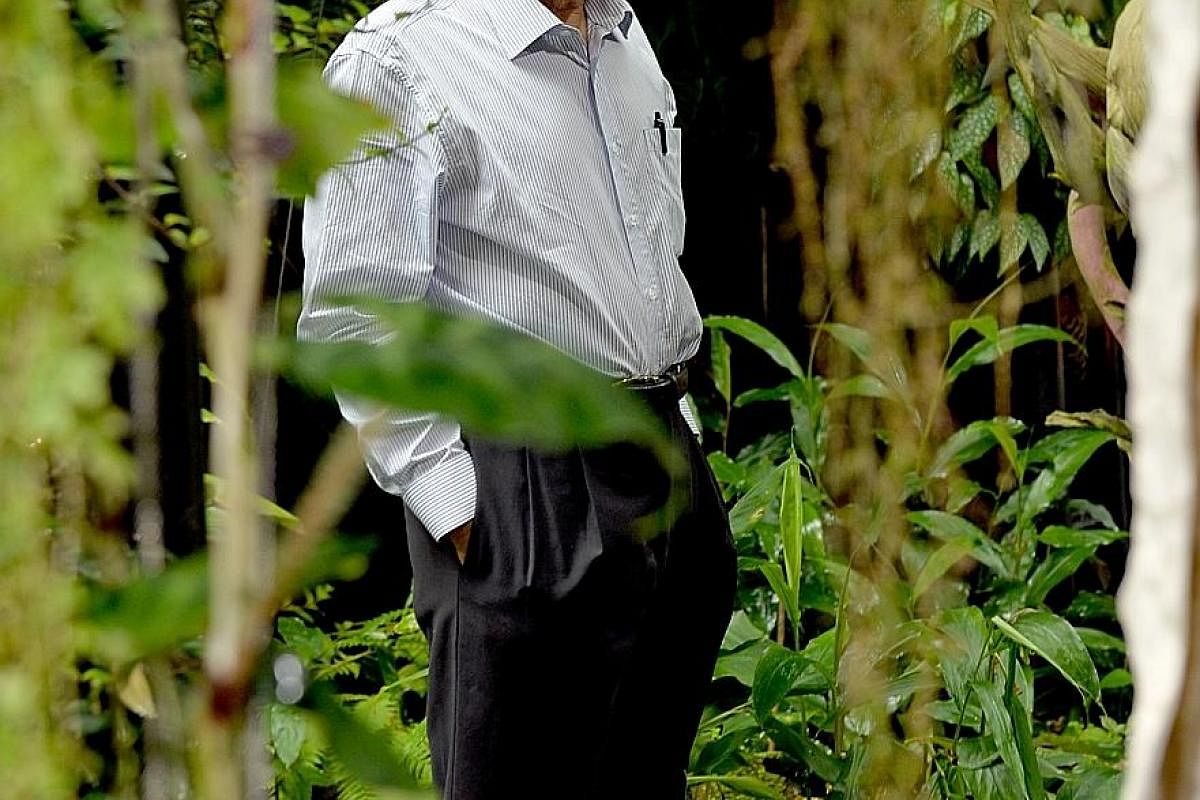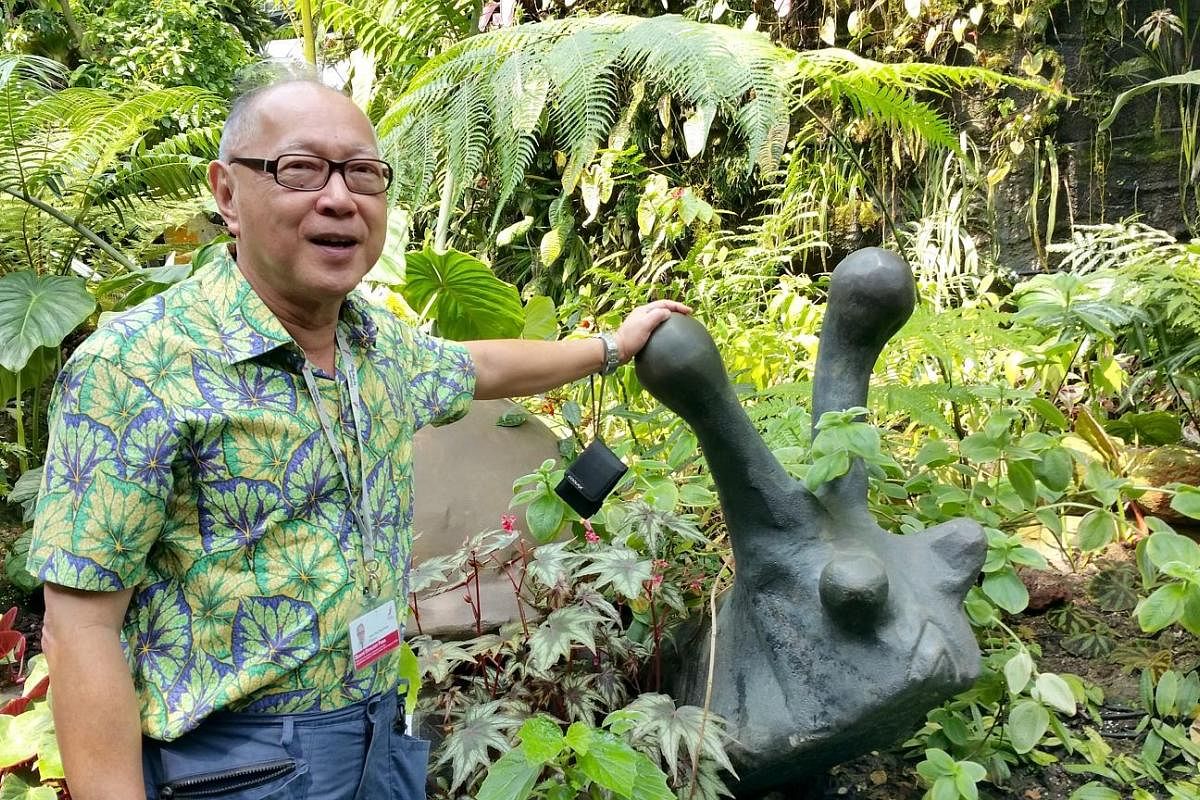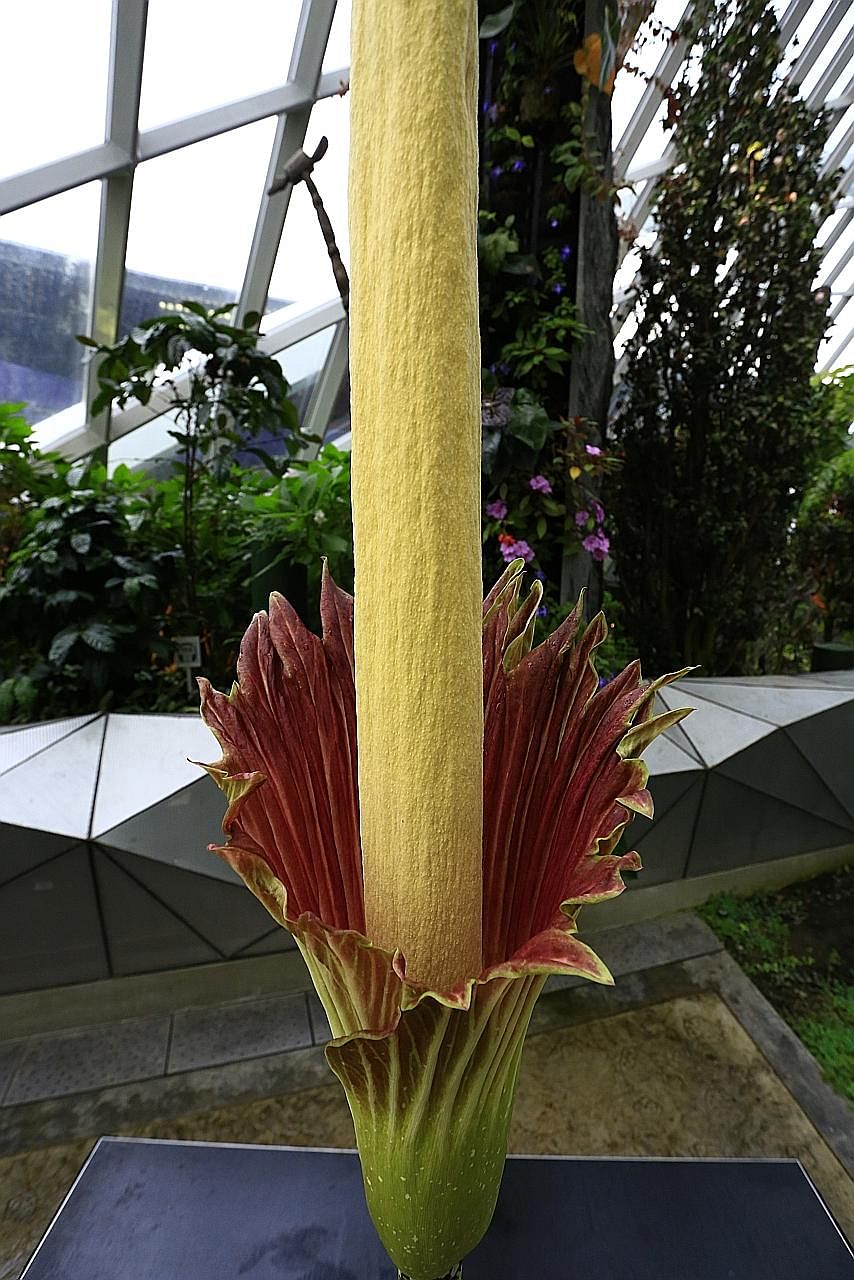The Life Interview With Tan Jiew Hoe
Gardens by the Bay board director Tan Jiew Hoe was born with green fingers
Board director of Gardens by the Bay Tan Jiew Hoe learnt to grow plants with his father's help when he was eight years old


A love of plants runs deep in Mr Tan Jiew Hoe's veins.
It is his reason for being, in more ways than one.
The 71-year-old patron of horticultural and botanical causes has spent four decades travelling to far-flung regions of the world to discover new plants.
And if not for an orchid, Mr Tan, who is a board director of Gardens by the Bay, might not even have been born.
During World War II, the Japanese went to his family bungalow in Leonie Hill Road looking for his father, a lawyer.
"The Japanese came to our house and offered my father two jobs," he says. "One was to listen to the BBC and translate the code system. Dad said no."

Thankfully, the officers had spotted a yellow Vanda deari orchid in bloom in the garden. They were impressed and asked him: "Did you grow it, you can grow orchids?"
Mr Tan explains: "To the Japanese, the orchid was a very difficult plant to grow."
And so the orchid hobbyist was put in charge of growing rice in Malaysia's Endau region, near the Johor-Pahang border, for the Chinese population in Singapore.
"The orchid saved his life," says Mr Tan, who helped conceptualise the revamp of the Secret Garden in Gardens by the Bay's Cloud Forest, which was completed in December last year.
His father was the late Tan Hoon Siang, who also headed several rubber companies in Malaysia. He won a top award for his orchid hybrid at the Chelsea Flower Show in London in 1954, which started the orchid craze in Singapore.
He was the son of rubber merchant Tan Chay Yan - a grandson of philanthropist Tan Tock Seng - who was the first man to have a rubber plantation in Malacca.
Mr Tan Jiew Hoe grew up in Singapore in the 1950s, when it was still under the British. The communists were active then, so his father did not allow him to leave their house, even to visit friends.
The 160,000 sq ft family garden became a fertile playground for the budding gardener.
It had at least 150 plant species ranging from orchids to fruit trees. There, the eight-year-old learnt to grow plants, with some help from his father.
"I got used to being alone. My friends were my plants," says Mr Tan, who grew up with five sisters as well as five half-siblings from his father's second marriage.
He attended Chong Hock Girls' School, which also admitted boys, and Beatty Secondary School.
Later, he left for the United Kingdom to study accounting at a technology college in Brighton. But he did not finish his course, returning to Singapore after his mother was diagnosed with womb cancer. She died about a year later in 1973 at the age of 63.
Mr Tan went on to help manage his family plantation .
"I don't have a degree. I learnt through my experience on rubber plantations, I cultivated my own agricultural knowledge," he says.
In 1981, the family house was sold to a unit of Far East Organization for $51 million. A decade later, Mr Tan Hoon Siang died at the age of 82.
Passionate about conservation, Mr Tan Jiew Hoe has so far sponsored at least 200 expeditions, donated close to 2,000 plant species and cultivars to Singapore Botanic Gardens and Gardens by the Bay, and sponsored at least 20 books on plants. Through his help, scientists have discovered at least 500 new species.
More than 15 plants, and a stick insect, beetle and lantern fly, have been named in his honour. One of these is the first successful hybrid of the Corpse Flower, the Amorphophallus "John Tan", which bloomed in 2013.
That year, Mr Tan was awarded the Pingat Bakti Masyarakat (PBM) by the president of Singapore, Dr Tony Tan Keng Yam, for his contributions.
He has gone on about 300 field trips to observe and document local flora.
"I was crazy," says Mr Tan of his younger self. "My family thought I should see a psychiatrist. In Singapore, you can have air-conditioning and hot meals. Why would you want to inconvenience yourself?"
There have also been some close shaves. He nearly fell 600m to his death in Machu Picchu, Peru, in the late 1980s, when a gust of wind blew off a plank he was about to walk on.
Another risky experience was in Mulu National Park, Sarawak, where he was navigating his way with ropes across some razor-sharp stalagmites as high as 45m. "If you fell, you would be impaled," he says.
These limestone formations, dubbed the Pinnacles, are found midway up the slopes of Mount Api. The base of the mountain, he adds, is home to a giant yam variety called the amorphophallus.
But the only time he was truly afraid, he says, was when he had to cross a waterfall in Papua New Guinea by "walking on two very thick ropes, with only two thin ropes to hold onto".
"A 30m drop and that's it."
Then there are the usual horrors that come with trekking through the rainforest: blood-sucking leeches, caterpillars that sting with the pain of "10 hypodermic needles" and itch-inducing plant sap.
"I think my record was 28 leech bites in two hours. That's the penalty for taking an hour to photograph a plant," says Mr Tan, who in the early days lugged around heavy Exakta and Nikon cameras and had to shelter flowers from the wind with an umbrella while taking pictures of them.
It may be an exciting job, but it is not glamorous.
"Very often you ask, why am I doing this? Five hours and you can't find a darn thing.
"If anyone thinks it's like Indiana Jones... Well, it doesn't work that way," says the bachelor with a laugh.
He helmed the revamp of the Cloud Forest's Secret Garden, a "refugium garden" that was two years in the making. Replete with stalactites and stalagmites, it also contains rare plants from tropical montane regions in South America and Asia - inspired by his travels.
Many of the plants there are begonias, which typically get less fanfare than orchids. "They are beautiful by themselves as foliage plants," he says, adding that some begonia leaves and flowers, while sour-tasting, can also be eaten.
Ms Andrea Kee, 59, senior assistant director of research and horticulture at Gardens by the Bay, who has joined Mr Tan on about five overseas trips, says he has a "photographic memory".
Mr Tan's long-time friend, Dr Kiat W. Tan, 75, founding chief executive of Gardens by the Bay, says with a laugh: "There are not many men in Singapore who like plants, other than to eat them."
He calls his friend "one of those rare patrons of botany and horticulture... It's hard to justify government expenditure (on such a cause). The money quite often is from our own pockets."
Mr Tan, who is also president of the Singapore Gardening Society, says he has been so successful at acquiring plants because he does not collect them for commercial gain. Nor is he a threat to collectors who can be competitive.
"I don't sell at all. I exchange or buy. Collectors are normally willing to give them to me because the plants go to the Botanic Gardens or Gardens by the Bay."
This also means he can help conserve plants even if they are not so commercially viable, like some begonias that take two years to grow 10 leaves.
He adds that the industry is facing "a very hard time" because of the high cost of renting land here, especially compared with neighbouring countries. "That's why many of the orchid and cut flower industries are moving out to Malaysia, Indonesia and Thailand," he says.
These days, Mr Tan leads a busy life, often going on overseas purchasing trips and growing plants for research in a private garden at his house. These are often transferred to the Singapore Botanic Gardens and Gardens by the Bay, but he is cagey about giving more details so as not to spoil the "surprise".
He also sits on the board of directors for the Singapore Chinese Girls' School, United Malacca Berhad plantation group and several family companies in Malaysia and Singapore.
After all these years, the thrill of the chase still beckons.
He says: "I'll be exploring until my legs give way."
Join ST's Telegram channel and get the latest breaking news delivered to you.
A version of this article appeared in the print edition of The Straits Times on February 19, 2018, with the headline Gardens by the Bay board director Tan Jiew Hoe was born with green fingers. Subscribe

